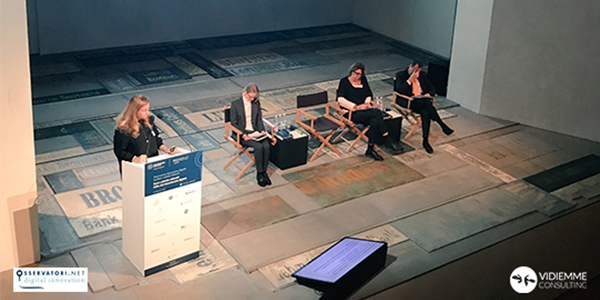Valorizing artistic heritage with the help of technology
In 2016, Vidiemme took part in Milan Polytechnic’s Digital Innovation in Cultural Heritage and Activities Observatory, a 9-month project that involved cultural institutions and supplier bodies active in the sector.
The project was very interesting and engaging as it had the goal of studying the level of technological offer and the state of the art of cultural institutions, to create a union that is as effective and efficient as possible between the two parties.
Various types of analyses were considered, including the study of how the patrimony available to museums and places dedicated to culture is valorized and exploited, and a comparison between the technological skills of Italian companies and startups with those of the international scene.
As Nicoletta Pagani, Vidiemme’s Marketing Manager, explains in the video interview below, “The first differentiating element is represented by the allocation and the amount of funding.
Despite this, there is substantial competitiveness of Italian startups in the development, complexity and technological level of solutions dedicated to the fruition and support of museum visits.
The focus of international companies, on the other hand, is concentrated mainly on the online goods sales market, and on web ticketing and booking services, activities that are not so developed in Italy” Pagani continues.
“Italy has an artistic patrimony to be valorized and technology is certainly able to do this, opening up access also to different types of public that frequently do not have access to cultural heritage at the moment.”
“The important thing, for cultural institutions, is to understand what the aim is, and companies like Vidiemme mainly deal with being strategic consultants to identify the goal on which to focus and how technology can help, placing the work of art at the center of the fruition experience. ”
The Milanese company’s path in this sector is long and varied, and has always been centered on listening to and respecting the needs of the beneficiary body and of the relevant public.
Laura Faedda, Vidiemme’s Sales Representative, in the video extract from the speech made at the Digital Innovation in Cultural Heritage and Activities Observatory, explains how the company’s projects in the museum art sector were born, what they were inspired by, the technologies used and the needs that drove the beneficiary.
The solutions developed fall within the mobile, wearable and IoT fields and are intended to guide the citizen, the tourist and the museum visitor in an innovative experience that allows him/her to relate to and experience the city, enhancing interaction and enjoyment, also for differently-abled people.
Laura Faedda also specifies that “the identification of the individual cultural realities’ specific needs of was very important, so that we could meet those needs through technology support. What we perceived as a strongpoint is the identification of a strategy and the translation of the strategy into an activity plan which is not purely tactical, but is medium and long term, accepting an experimental view in the management of our activities.”
Since it is experimentation, it is clear that we often ran up against the limits of the projects we were working on.
In fact, we need to consider short-term timing that facilitates problems relating to often-insufficient investments or the use of experimental technologies that have never left the prototype stage.
This did not stop Vidiemme, which has always been a strategic consultant bringing innovation to the service of the entity with which the company interacts.
Working on projects in this sector has been a source of great inspiration and growth for Vidiemme both from a technological point of view, increasing the developmental know-how, and from the consulting point of view, honing skills in listening to and analyzing clients’ requirements.


